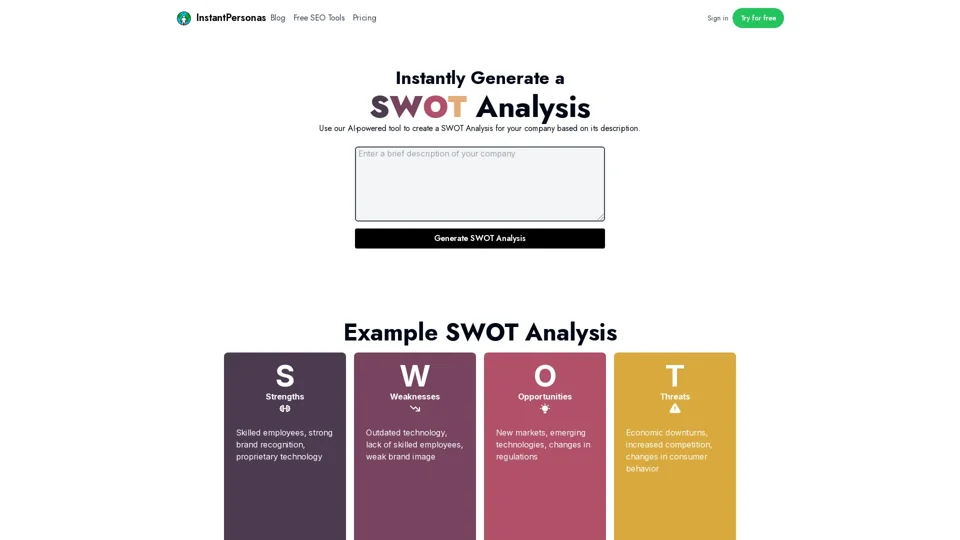SWOT Analysis for [Company Name]
### Strengths
-
Strong Brand Recognition: [Company Name] is well-known in the industry, which helps in attracting customers and building trust.
-
Skilled Workforce: The company employs a team of highly skilled professionals who contribute to its innovative products/services.
-
Proprietary Technology: Ownership of unique technology gives [Company Name] a competitive edge in the market.
### Weaknesses
-
Outdated Technology in Certain Departments: Some areas of the company still rely on older systems, which can hinder efficiency.
-
High Employee Turnover Rate: Recent data shows a higher-than-average turnover, which can disrupt continuity and increase recruitment costs.
-
Weak Brand Image in Niche Markets: While strong in the main market, the brand struggles to resonate in niche segments.
### Opportunities
-
Expansion into Emerging Markets: [Company Name] can explore new geographic regions where demand for their products/services is growing.
-
Adoption of Emerging Technologies: Investing in AI and IoT could enhance product offerings and streamline operations.
-
Strategic Partnerships: Collaborating with influencers or complementary brands can open new distribution channels.
### Threats
-
Economic Downturn: A recession could reduce consumer spending, impacting sales and revenue.
-
Increasing Competition: New entrants and established competitors are vying for market share, potentially eroding [Company Name]'s customer base.
-
Rapidly Changing Consumer Preferences: Shifts in what consumers want can make current products less desirable if not addressed.
Presentation Tips:
- Use a traditional 2x2 SWOT matrix for clarity.
- Prioritize factors based on impact and likelihood, highlighting the most critical ones.
- Support each point with specific data or examples to ensure accuracy and relevance.
This structured approach will provide a clear and actionable strategic tool for [Company Name], aiding in informed decision-making and strategic planning.
